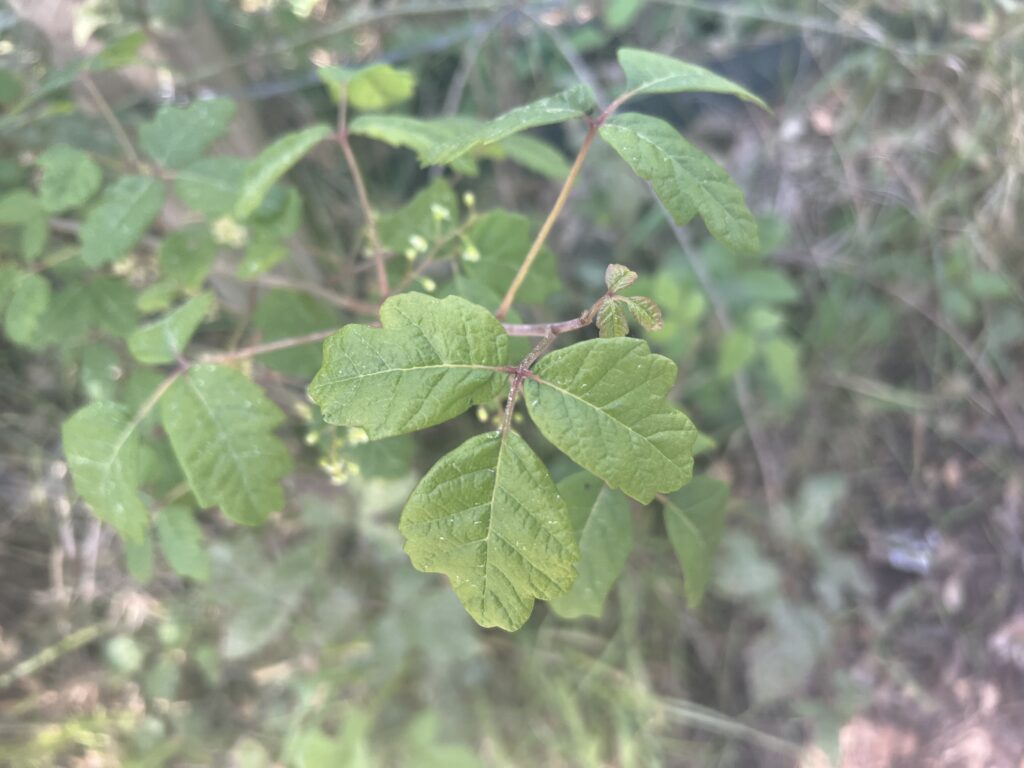
How to Identify Poison Oak Throughout its Life Cycle
By Alix Soliman, Communications & Outreach Coordinator
Children recite “leaves of three, let it be,” but that’s not always specific enough, especially for those most susceptible to poison oak (Toxicodendron diversilobum). Since poison oak is a deciduous plant, it doesn’t always have leaves. As the seasons change, you’ll find both barren sticks and shiny new sprouts in various hues.
The leaves are responsible for releasing high quantities of urushiol, the potent oil found in the sap of poison oak, poison ivy, and poison sumac that causes a dry, red, and itchy rash. Urushiol can stay active on any surface for up to five years, and just one nanogram can cause a rash. As such, bare branches should be avoided the same as leafy shrubs.
There is a common misconception that some people are completely immune to poison oak. Tolerance to urushiol can change throughout a person’s lifetime. Anyone can become sensitive to the plant with repeated exposure, and those who have reacted strongly as a child may grow tolerant to it in adulthood. As such, it is best to steer clear of this native plant whether you’ve had a reaction in the past or not.
Identification Tips:
- The leaf shape resembles the lobes of an oak leaf (though sometimes the leaf has a more jagged edge)
- Leaf groups grow in an alternating pattern on the stem
- Can grow as a low shrub, huge bush, or vine up a tree or other structure
- The stems and leaves do NOT have thorns
New Growth
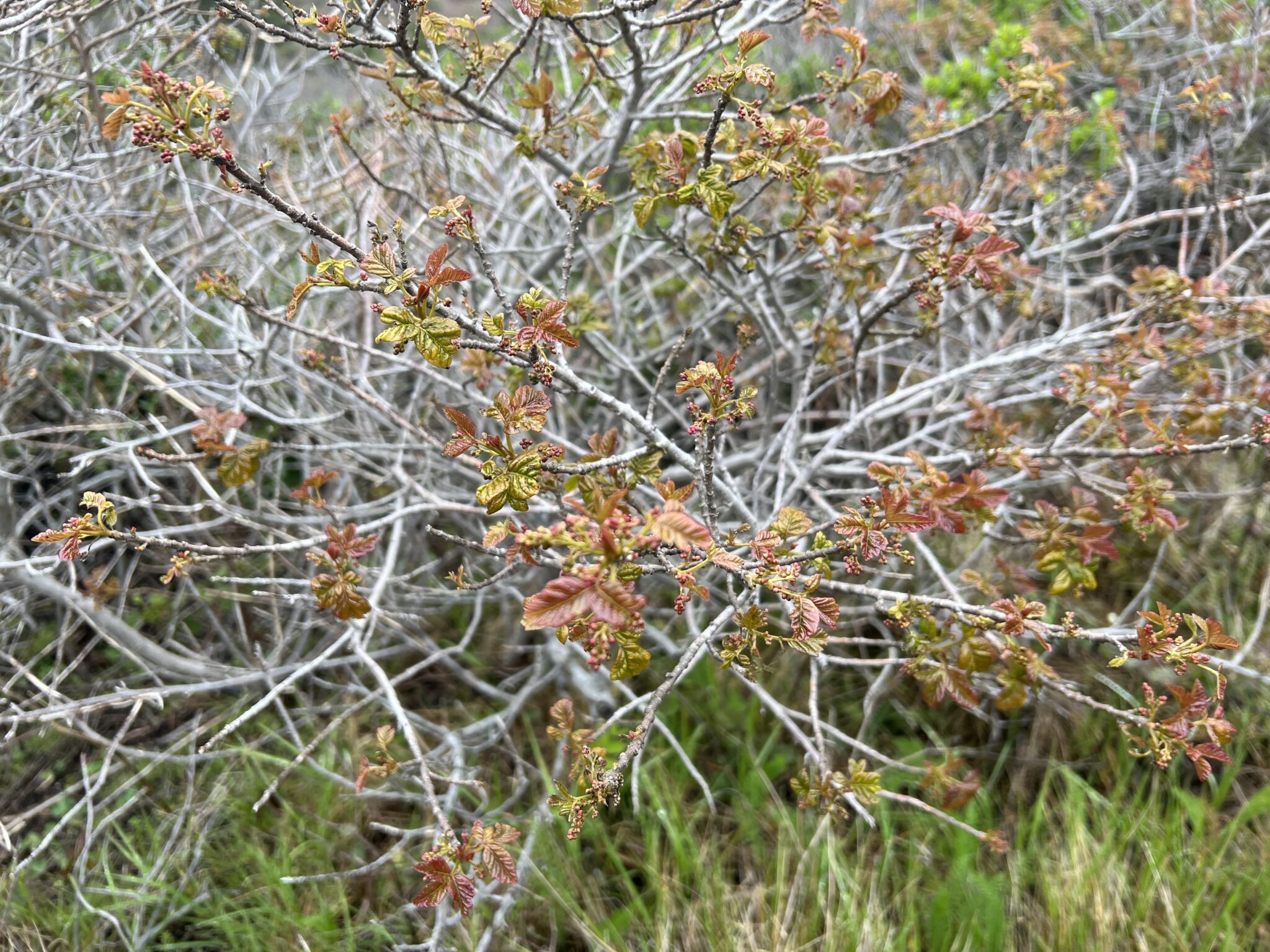
In the spring, poison oak will present itself with shiny, reddish or light green leaves that sometimes curl inward. The stems are erect and the leaves can be anywhere from 1/3rd of an inch to 1.5 inches long. At this stage, the plant produces the highest concentration of rash-causing oil and should be avoided at all costs.
Flowering Stage
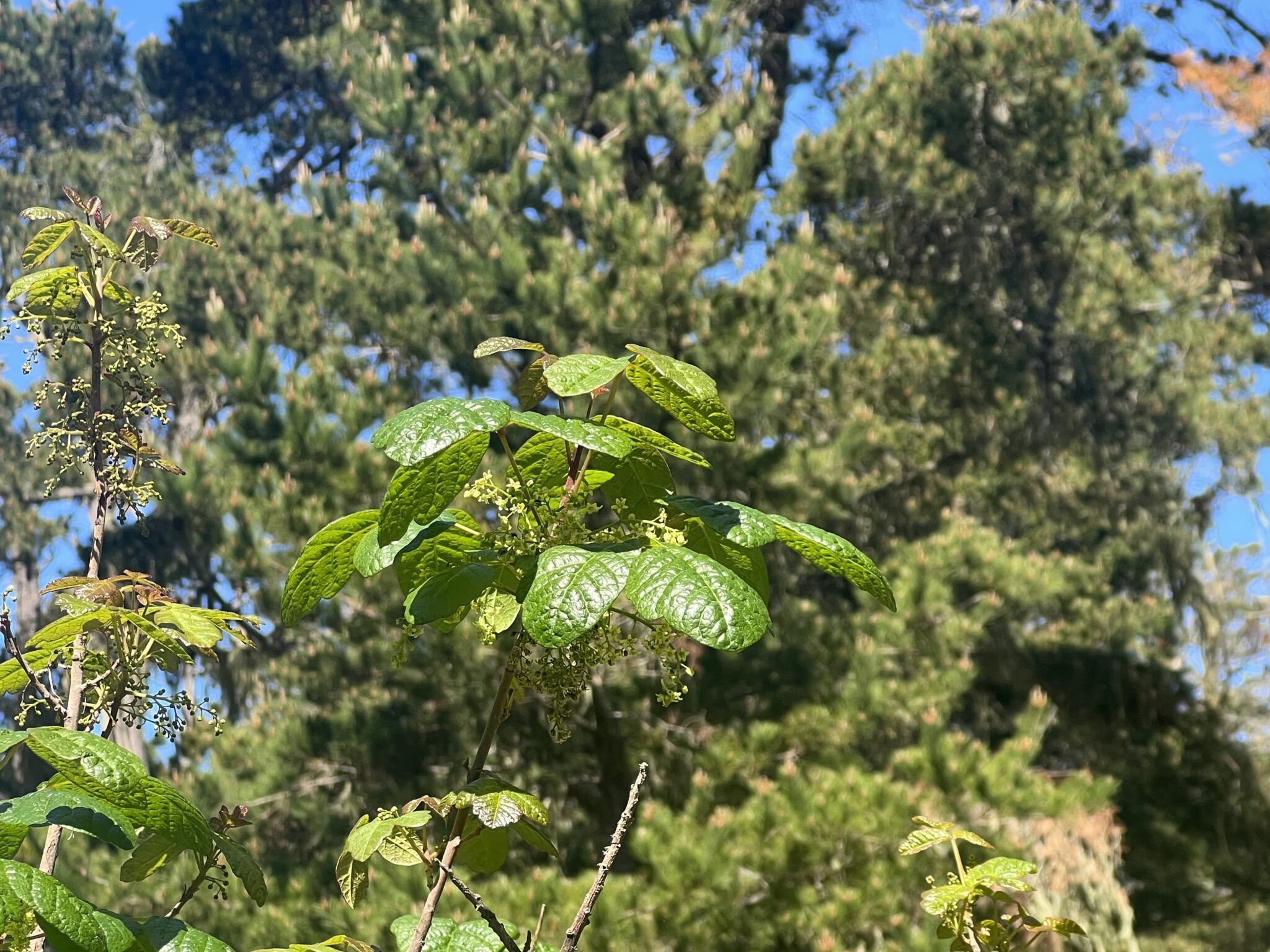
As the leaves grow larger, they become more green (the shade can vary from bright shamrock green to more of a dark forest color). In the late spring and summer, the plant forms half-centimeter, star-shaped, yellowish-white flowers in clusters on the stems.
Autumnal Colors
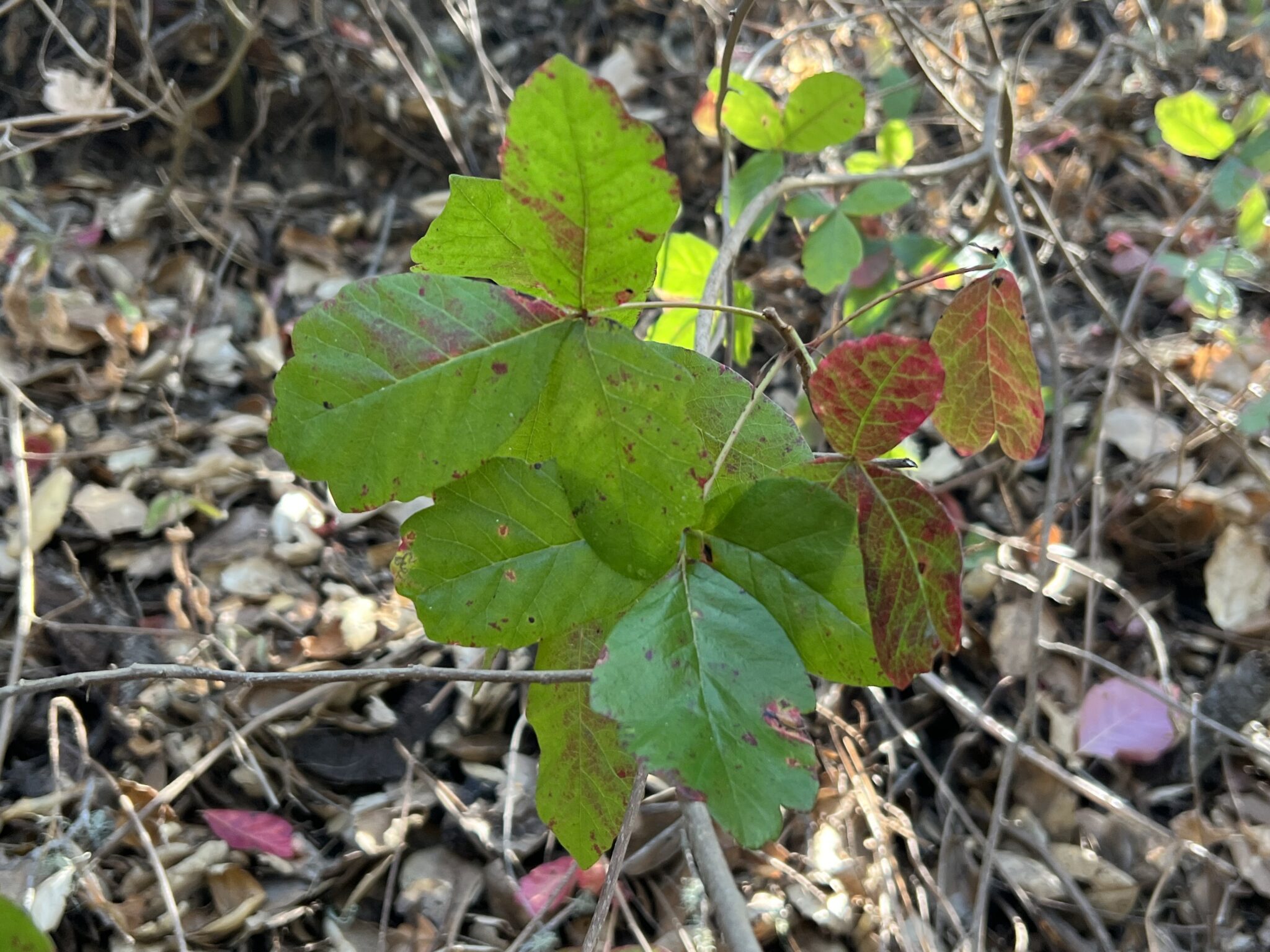
During the late fall, cool temperatures darken the green leaves and form splotches of bright red, brown, and deep purple. Many leaves lose their oily sheen and turn completely red or purple before falling to the ground.
Bare Branches
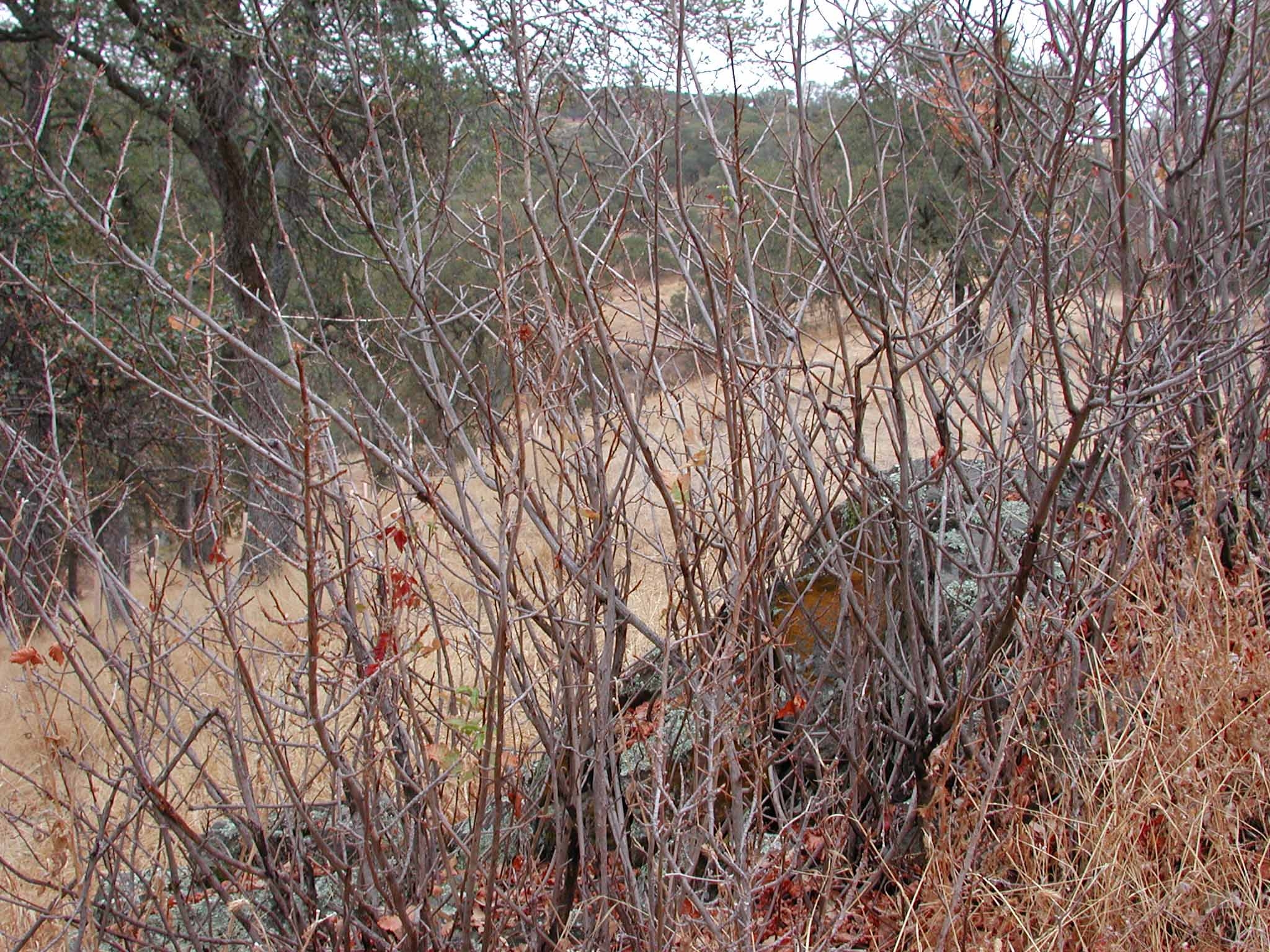
Photo courtesy of Anne McTavish / UCANR.
As a deciduous perennial shrub, poison oak loses its leaves in the winter and lays dormant until the spring. You’ll encounter pale cinnamon or dull grey colored poison oak branches sticking out of the ground like reeds (especially if it’s been cut) or standing in dense thickets that can be over 6 feet tall.
Now that you know what it looks like, you can practice identifying it when you go for a stroll, show others what to look for, and obviously…don’t touch it. If you know you’re going to be hiking in an area with a lot of poison oak (or if you have to bushwhack through it for work), the best way to prevent yourself from developing a rash is to wear cotton pants that go over or tuck into your boots and pack gloves in your backpack. If you end up brushing up against it, make sure to:
- Wash your laundry in hot water on a long cycle
- Shower in cold water with Tecnu
- Apply calamine lotion to the affected area
- Don’t scratch
- If your rash blisters or doesn’t improve after a week, call your doctor
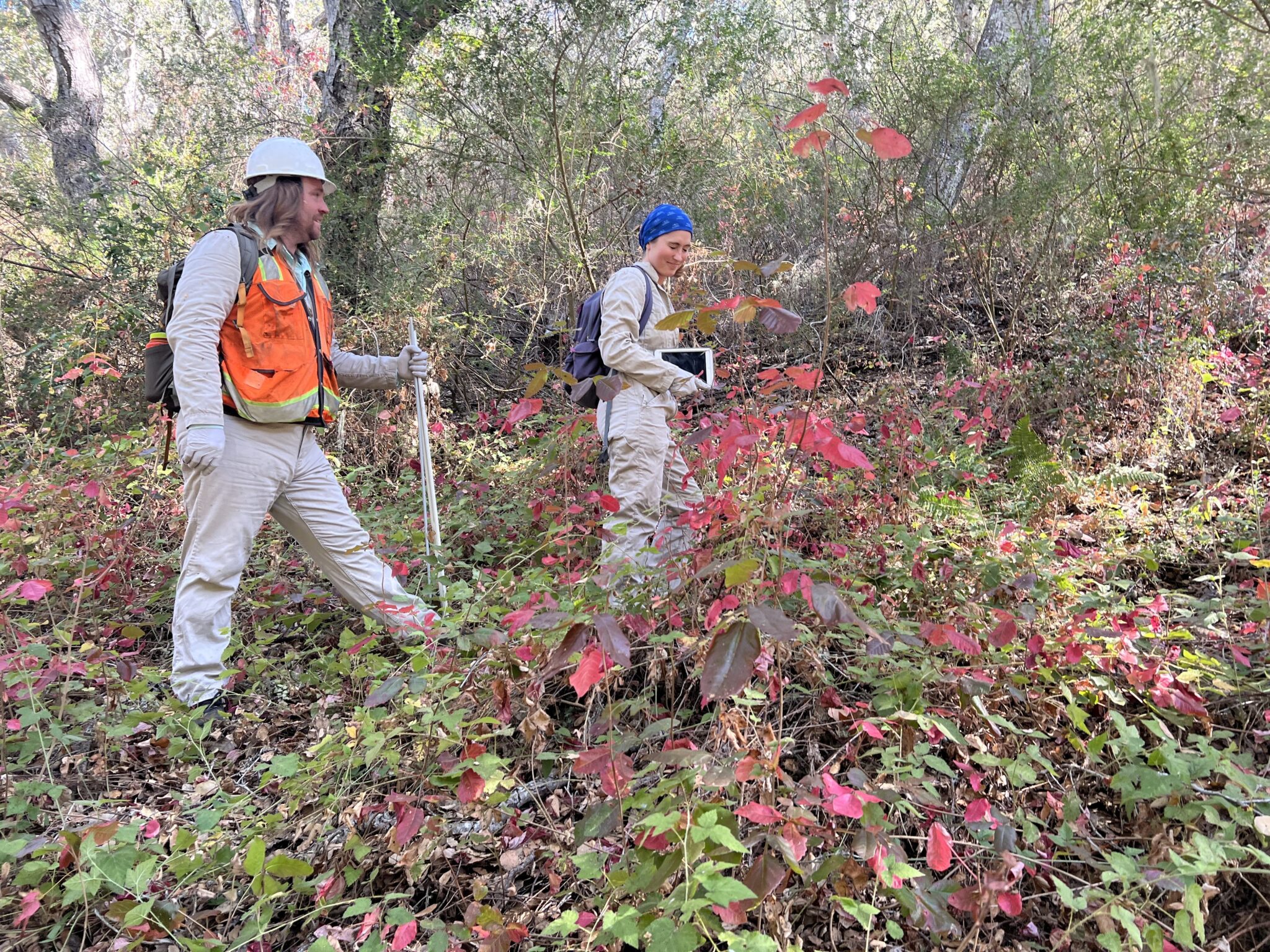
SLC staff wearing coveralls while working in a patch of poison oak.
SLC staff also keep a bottle of witch hazel in each work vehicle. If we are exposed to poison oak, we daub some on the affected area as it is a natural astringent that dries out the oil, kills bacteria, and reduces inflammation.
Photos by Alix Soliman unless otherwise noted.